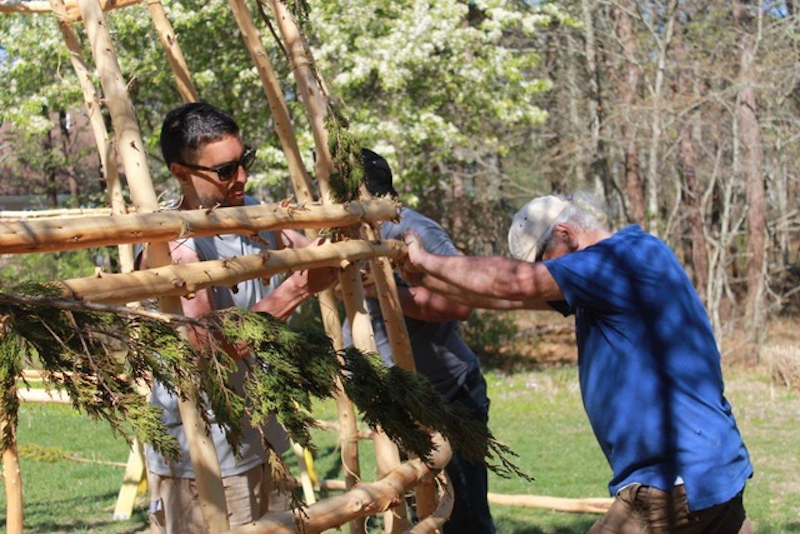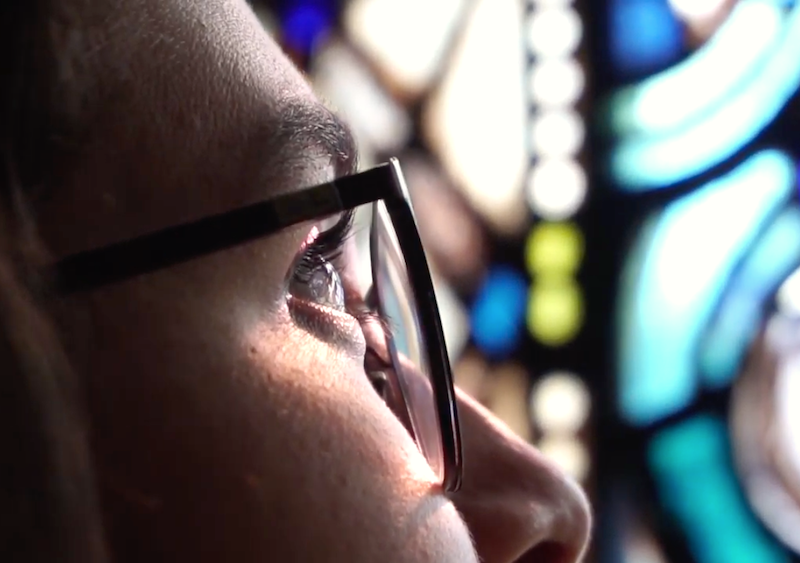

- Contact Us
- Search
-
Mayflower400 partner destinations:
The making of the wetu – creating a lasting Wampanoag legacy
Wetu is the Wampanoag word for house and for centuries has been a traditional home central to the native people's life and culture.
Those who visit the Plimoth Patuxet living history museum in Plymouth, Massachusetts, today will see a number of different kinds of homes.
They include a mat-covered wetu and a longer, bark-covered house or nush wetu, meaning a house with three fire pits inside.
Darius Coombs is Director of Wampanoag and Eastern Woodlands Research and Interpretive Training at Plimoth Patuxet.
He is also one of the designers of a specially commissioned wetu that is hoped to travel to the UK later this year.
Members of the Wampanoag Nation are planning to visit Nottinghamshire this September as part of the Mayflower 400 commemorations.
The newly constructed wetu will then go on display in the grounds of Bassetlaw Museum - close to the original homes of Mayflower passengers such as the Bradford and Brewster families.
Organisers are also hoping to hold a conference on acceptance and the Wampanoag perspective during September.
Here, Darius explains more about designing the wetu and its huge cultural significance to the Wampanoag people.
What is a wetu?
A wetu is a traditional Wampanoag house which might hold six to eight people.
The house you're going to see in England this year, hopefully, will be 16ft long, 14ft wide and 10ft high.
You want it to be at least 10ft high because it draws nice to fire, and in the middle, you have a smoke hole which allows smoke to go out.
How do you build a wetu?
The frame is made out of white cedar; you put one pole one side, pack it with stone first and make your arch.
Then you put another pole on the other side, then take the ropes and pull them together to form a perfect arch.
As they're dome-shaped houses, you start high in the middle and have them slightly going down on both sides.
Then, once your arches are all done, you have to put rings around the houses - a pole that bends around the house going horizontally and ties all the arches together,
You tie your frame together with hickory bark and spruce root, and then go out to get the bark, which is fresh and will move exactly the way you want it.
Then, you have an exterior frame which goes on the outside which holds all that bark together.
The wetu and its lasting legacy

The wetu that is being created for Bassetlaw Museum in England is of huge cultural significance.
We don't just want to build it and leave it - there has to be some information, literature there that people can learn from.
It's important that we show our culture in England so that people will know about our people, that we're still here and we're not going anywhere.
The view from England

Isabelle Richards, Heritage Engagement Officer at Bassetlaw Museum, adds: "The idea of the wetu project is bring over some representatives of the Wampanoag Nation to the UK.
“Here, they will share some building skills, traditional craft skills and their stories, culture and heritage with local people in Bassetlaw - particularly the local school groups we're hoping to bring and to have some sessions to see the wetu being built.
"The Wampanoag were really involved with the interpretation of the Pilgrims Gallery from the start.
"We were very keen not to put words in their mouths, so they approved all the interpretation about the native way of life within the gallery.
"So, there was a really strong working relationship there already, and there was this idea that we could share our culture in this way, comparing perhaps the traditional Nottinghamshire mud-and-stud building techniques with the wetu architecture, and the native skills from both regions."
Sign up for the latest Mayflower 400 news
You'll be the first to hear the latest Mayflower news, events, and more.
Log In
Register
Mayflower 400 Proudly Supported by our National Sponsors and Funding Partners






